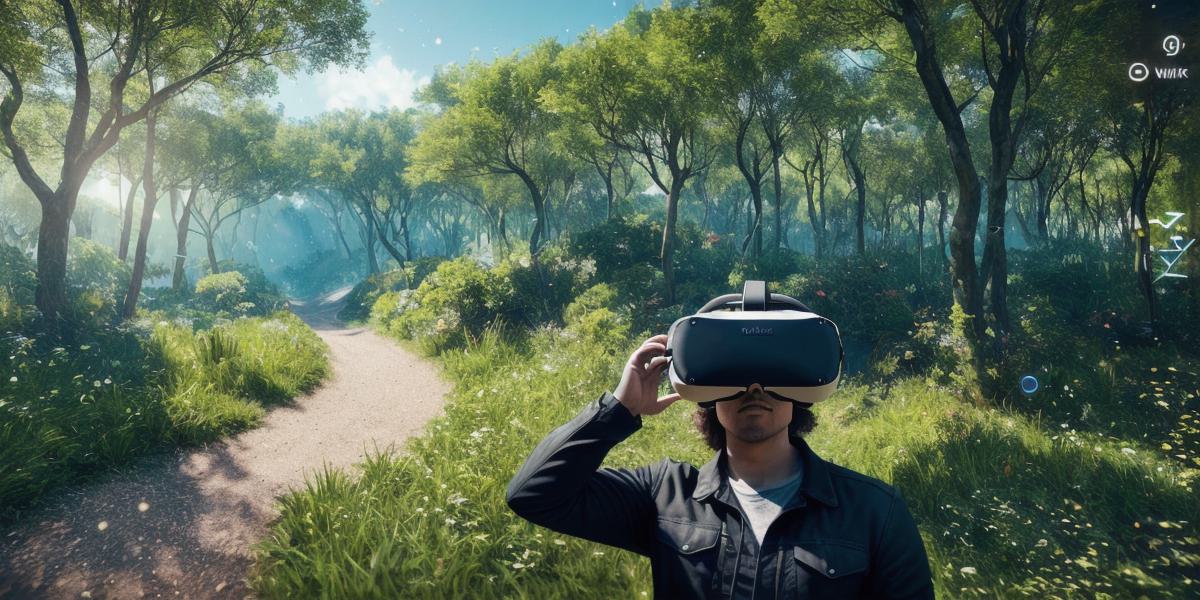Virtual reality (VR) has revolutionized the way we experience immersive worlds and interact with technology. With virtual reality goggles, users can escape from the limitations of reality and enter new dimensions that were previously unimaginable. In this article, we will explore the different types of VR experiences and how they are changing the future of gaming, education, and more.
VR Goggles: A Revolution in Immersive Experiences
Virtual reality goggles, also known as VR headsets, are devices that track the movements of the user’s head and display a 3D image that appears to float in front of them. These goggles can be used with a computer or gaming console and require a powerful graphics card to render high-quality images.
There are several types of VR goggles on the market, each with its own unique features and capabilities. Some of the most popular VR goggles include:
1. Oculus Rift S
2. HTC Vive Pro Eye
- PlayStation VR
4. Samsung Gear VR
Each of these goggles offers a slightly different experience, with some focusing on gaming while others prioritize education or enterprise applications.
Virtual Reality Applications
Virtual reality has the potential to revolutionize many industries, including gaming, education, and more. Here are some examples of how VR is currently being used:
- Gaming: Virtual reality is changing the way we play games by allowing us to fully immerse ourselves in the game world. Games like Beat Saber, Half-Life: Alyx, and Resident Evil 7 have become incredibly popular on VR platforms. These games offer a level of immersion that was previously impossible on traditional gaming systems.
- Education: Virtual reality is also being used in education to create more engaging and interactive learning experiences. For example, students can take virtual field trips to different parts of the world or experience historical events in a more immersive way. This technology has the potential to make learning more enjoyable and effective.
- Enterprise: Virtual reality is being used by companies like Ford, Walmart, and General Electric to train employees in a safe and controlled environment. This allows for better training and reduced costs compared to traditional methods.
- Therapy: Virtual reality is also being used as a tool for therapy and rehabilitation. For example, patients can undergo virtual exposure therapy to treat anxiety disorders or use VR simulations to practice physical movements after an injury.
Virtual Reality vs. Augmented Reality
While virtual reality and augmented reality (AR) may seem similar, they are actually quite different. Virtual reality creates a completely immersive experience that blocks out the real world, while augmented reality overlays digital information on top of the real world.
Virtual reality is typically used for gaming or educational applications, while augmented reality is more commonly used in mobile apps and wearable devices. For example, Pokémon Go uses AR to let users catch virtual creatures in real-world environments.
FAQs: Frequently Asked Questions
Q: What are the requirements for using VR goggles?
A: To use VR goggles, you will need a computer or gaming console with a powerful graphics card. You will also need a high-speed internet connection and access to VR content.
Q: How do VR headsets track my movements?
A: VR headsets typically use cameras and sensors to track the movement of your head. This information is then used to adjust the 3D image that appears in front of you, creating a more immersive experience.
Q: What kind of content can be viewed on VR platforms?
A: VR platforms can be used for gaming, education, enterprise applications, and therapy. There are also many other industries exploring the potential of virtual reality, including architecture, design, and entertainment.
Summary
Virtual reality has the potential to change the way we experience immersive worlds and interact with technology. Whether you’re a gamer or a student, virtual reality can offer a level of immersion that was previously impossible on traditional platforms. As VR technology continues to evolve, we can expect to see even more exciting applications emerge in the future.
